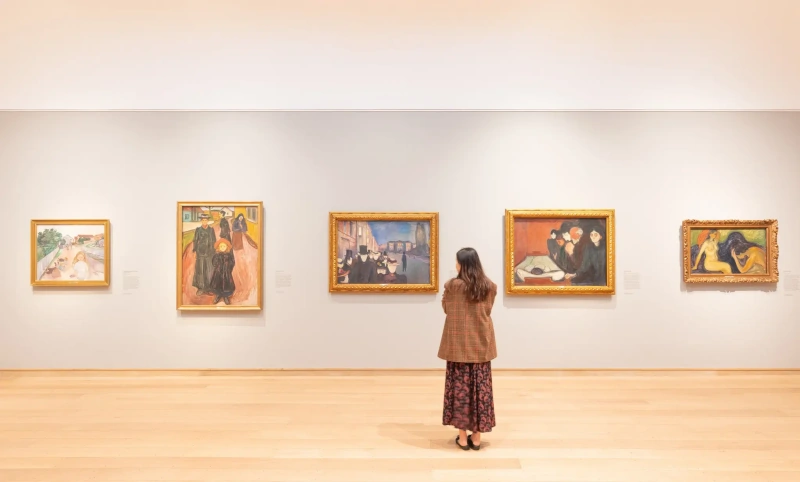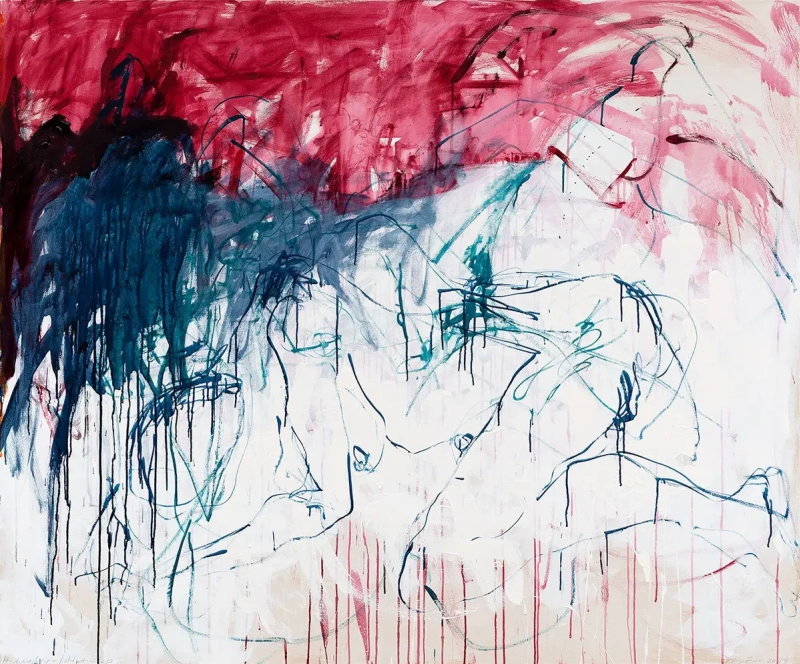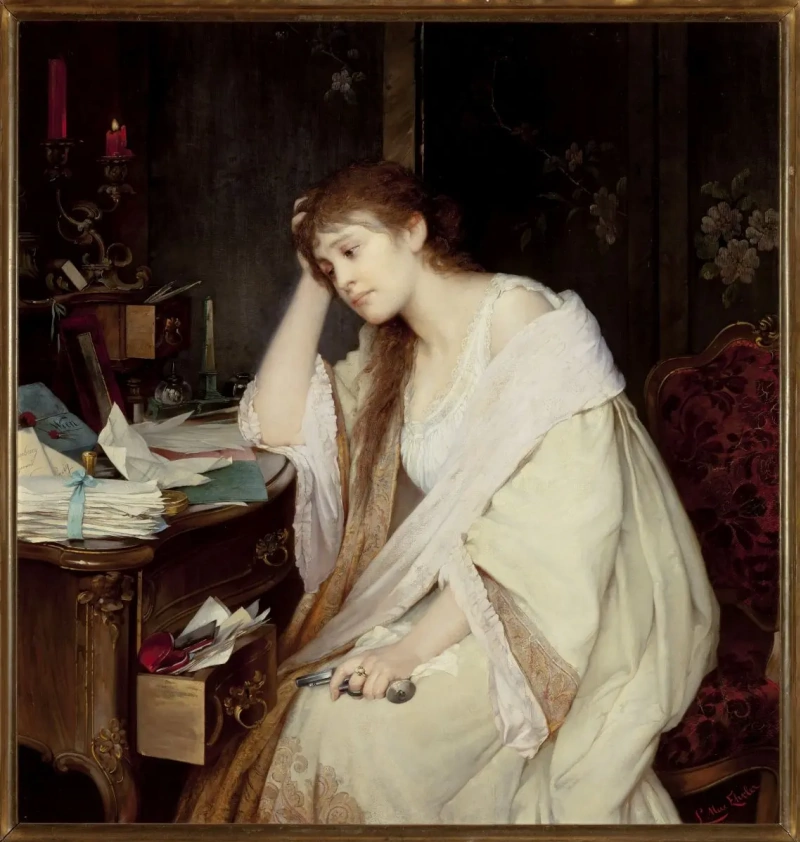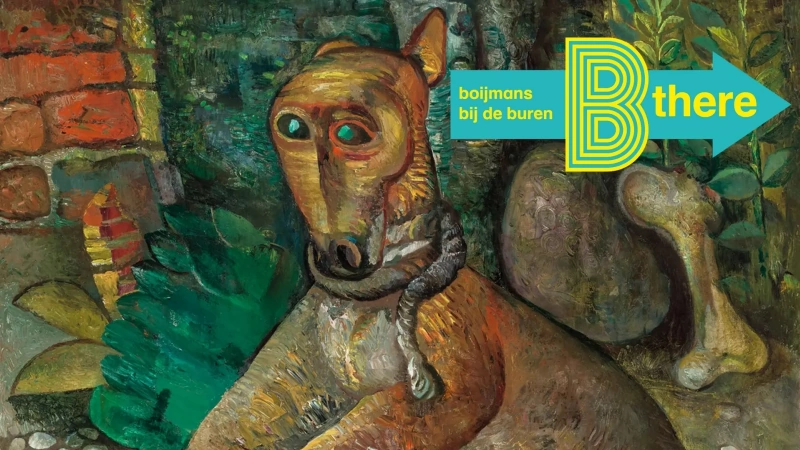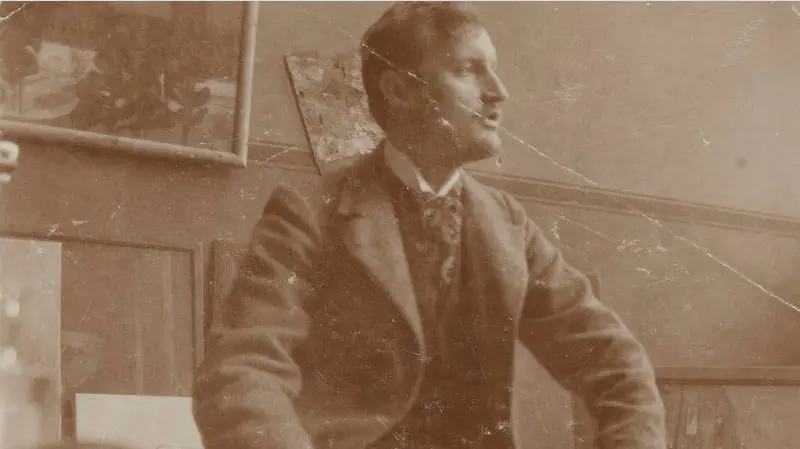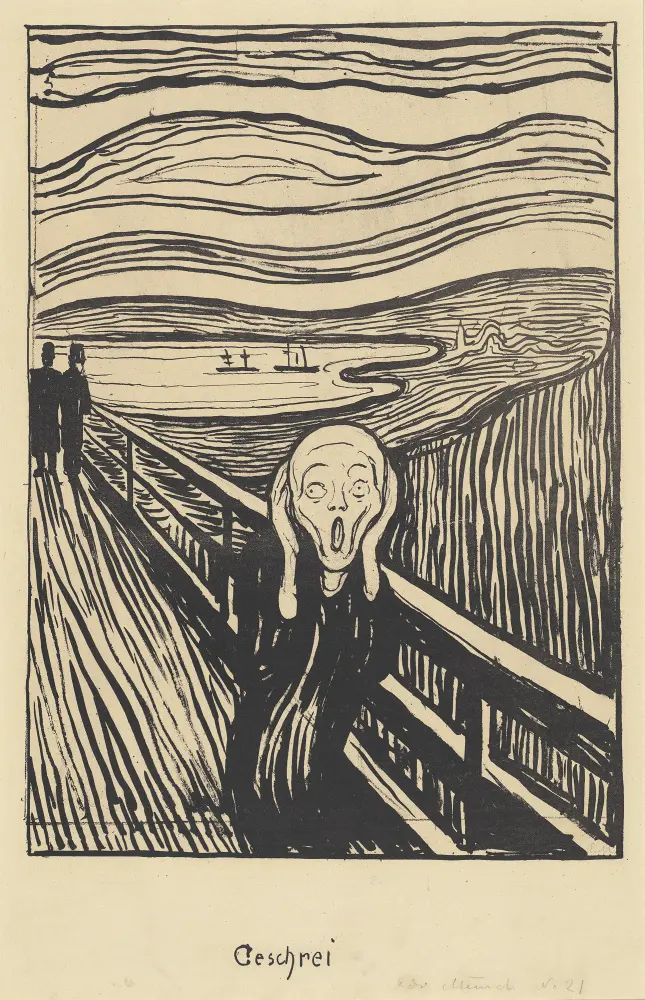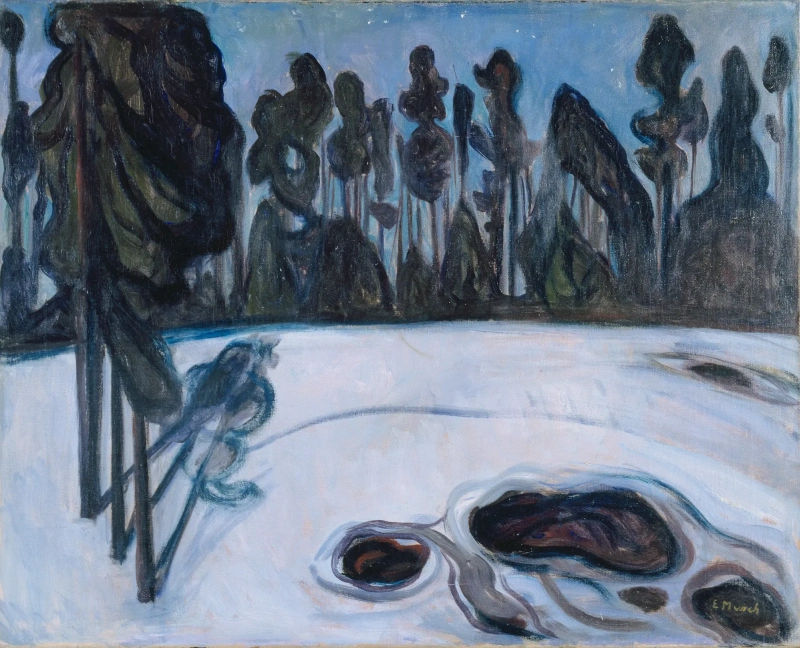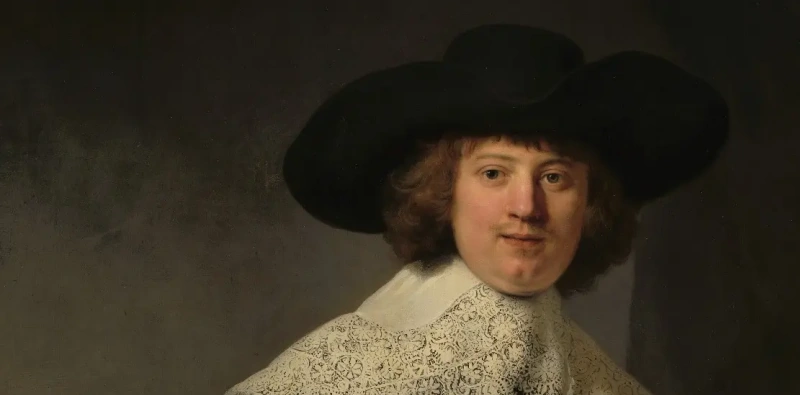log in
Enter site
Login to use Arthive functionality to the maximum
Edward Munch (Nor. Edvard Munch; December 12, 1863, Löthen, Hedmark - January 23, 1944, Ekel, near Oslo) - Norwegian artist with an alarming, northern, doomed, prophetic attitude, which formed the basis of his painting style - expressionism.
Features of the artist Edward Munch: For most of his life, Munk worked on a large cycle, “On Love, Life, and Death,” which he called The Frieze of Life. It includes all the most famous and iconic works of the artist. Tragic, nervous, doomed, full of justified and inexplicable presentiments, his paintings are built on the stark contrast of color, sharpness of forms, inevitable rhythm of composition.
Famous paintings by Edward Munch: Scream, "A vampire", "Girls on the bridge", Madonna, "Four ages in life".
The Norwegian artist Edward Munk is a man of the north: with a complex, controversial character, with poor health and increased sensitivity to changes in nature and weather. Only here, in the north, could expressionism be born - passionate, nervous, deep, opposing light southern impressionism.
A few oddities of Munch Munk hated writing fingers, woman’s breasts, ears and nails, didn’t like flowers in his room, could not stand the process of withering, he saw the machinations of enemies in the simple actions of friends ... Sick, suspicious, irritable, but incredible storyteller with a keen sense of humor, a regular at the meetings of the creative elite of Oslo, Berlin and Paris.
Edward Munch was a very attractive man, but on self-portraits he always ruthlessly added himself several years and wrinkles, looked from the canvases hard and always without a smile.
The young women irretrievably lost their heads from his impressive Viking appearance, combined with mysterious modesty, but Munch himself escaped from women who had appeared in his life for quite a while. Sometimes literally - escaped. For example, he stood up silently and simply transferred to another train in the middle of a honey trip.
Critics did not spare Munch: bullying his artistic techniques and individual paintings were poisonous and sophisticated. But at the same time he can be called a real lucky one - he sold his first paintings at the age of 18 and became the first Norwegian artist whose solo exhibition was held in Oslo. Munch was then only 26!
He was internally connected with the sea, like a true Norwegian, believed that the sea should be visible from anywhere in the city, but when he finally settled in Ekel’s own estate, he surrounded the open workshop with a 4-meter fence.
The strangeness of the artist’s character and behavior is a manifestation of inner freedom, sincere and unconnected by the canons of creativity. “We need to stop writing knitting women and reading men. I will write people who are breathing, feeling, loving, and suffering. People should be imbued with the sanctity of this and take off their hats in front of pictures, as in a church ”, - Munch dreamed. That's right, they take off their hats.
Fear of life In the center of Oslo, in a house on the street on Pilestredet, where Munch spent his childhood, in the entire brick wall is one of the most remarkable reproductions of The Scream. Black paint on rough brick. Everything is very true and appropriate: the source of Munkovsky’s restless, nervous attitude is here, in childhood.
Once at home it was fun, my father told wonderful stories, my mother was alive. Edward was 5 years old when she died and when dad stopped making up fairy tales and started reading the Bible. After 9 years, the 15-year-old sister Sofia also died. Illness and fear are the two most powerful and lasting feelings of childhood, and indeed of all subsequent life.
Since 1879, Edward has been disciplined as an engineer, but it will take him only a year to understand: he wants to be an artist. One of the most important women in the life of the future artist is Aunt Karen. It is she who gives him his first drawing lessons and persuades the displeased father, the military doctor Christian Munch, to give the young man a chance to fulfill his dream.
The birth of love And then the real life begins, easy, heady, free. Already in 1881, Edward studies at the Royal School of Drawing, sells his first paintings, rents a studio with friends right in the center of Oslo, and after a few years receives a state scholarship and continues his studies in France. Scholarships will be strewed one after another, giving the young artist the opportunity to live alternately in Nice, Norway, Berlin, Paris and create the very first scandalous and brilliant paintings: "Sick girl", "The next day".
Each of these paintings causes an outpouring of poison and resentment from critics: “... it's not hands, but fish in shrimp sauce”, "... until Munk's drunken prostitutes will be allowed to sleep in the National Gallery" and in the same vein.
With the scandal, the first solo exhibition of Edward Munch in Berlin in 1892 opened and quickly closed. But with each new scandal, the artist comes to the recognition and respect of colleagues, friends, writers, famous and wealthy connoisseurs of art.
The flowering and sunset of love In 1891, in Berlin, Munch began work on the most important, complex and controversial work - The Frieze of Life, which will last 30 years. This symphony of life, death, fear, love and pleasure will include all of his most famous paintings: Scream, Madonna, Ashes (1, 2) and dozens more. And for the first time in the sequence conceived by the artist, they will appear in the gallery of the Berlin Secession in 1903.
Munch gladly joins the bohemian gatherings of writers and artists, leads the red-haired beauty Dagny Yuel, who will long become his muse and model for the most sensual paintings, and then the wife of Munkovsky’s friend Pshebyshevsky into the literary circle “At the Black Pig”. He connects in his most painful, sweet and long romance with the beauty Tula Larsen, which ended with Tula’s attempt to commit suicide and Munk’s shot finger.
Painful and impressionable from birth, suffering from loneliness and persecution mania, the artist does not stand the test of alcohol and people and in 1908 he goes to the hospital with a nervous breakdown.
Death Since 1913, the truly successful years of the artist Munch begin, which, however, does not make him happy and calm. He parted with paintings hard, sells successful ones with pain, unsuccessful ones with despair. The prices for his work are growing every year, and he could easily become a millionaire. Munch is invited to paint the university assembly hall in Oslo, the town hall, the theater, create scenery for Ibsen’s plays, his name is with exhibitions in Paris, Vienna, Prague, Munich, Dresden, Copenhagen, England and even America.
But Edward Munch will die in 1944 alone, in his mansion, in a city occupied by the Germans. Those Germans who, when in power, squeamishly got rid of Munch’s paintings, having sold them from German museums to private collections.
Author: Anna Sidelnikova
继续阅读
Features of the artist Edward Munch: For most of his life, Munk worked on a large cycle, “On Love, Life, and Death,” which he called The Frieze of Life. It includes all the most famous and iconic works of the artist. Tragic, nervous, doomed, full of justified and inexplicable presentiments, his paintings are built on the stark contrast of color, sharpness of forms, inevitable rhythm of composition.
Famous paintings by Edward Munch: Scream, "A vampire", "Girls on the bridge", Madonna, "Four ages in life".
The Norwegian artist Edward Munk is a man of the north: with a complex, controversial character, with poor health and increased sensitivity to changes in nature and weather. Only here, in the north, could expressionism be born - passionate, nervous, deep, opposing light southern impressionism.
A few oddities of Munch Munk hated writing fingers, woman’s breasts, ears and nails, didn’t like flowers in his room, could not stand the process of withering, he saw the machinations of enemies in the simple actions of friends ... Sick, suspicious, irritable, but incredible storyteller with a keen sense of humor, a regular at the meetings of the creative elite of Oslo, Berlin and Paris.
Edward Munch was a very attractive man, but on self-portraits he always ruthlessly added himself several years and wrinkles, looked from the canvases hard and always without a smile.
The young women irretrievably lost their heads from his impressive Viking appearance, combined with mysterious modesty, but Munch himself escaped from women who had appeared in his life for quite a while. Sometimes literally - escaped. For example, he stood up silently and simply transferred to another train in the middle of a honey trip.
Critics did not spare Munch: bullying his artistic techniques and individual paintings were poisonous and sophisticated. But at the same time he can be called a real lucky one - he sold his first paintings at the age of 18 and became the first Norwegian artist whose solo exhibition was held in Oslo. Munch was then only 26!
He was internally connected with the sea, like a true Norwegian, believed that the sea should be visible from anywhere in the city, but when he finally settled in Ekel’s own estate, he surrounded the open workshop with a 4-meter fence.
The strangeness of the artist’s character and behavior is a manifestation of inner freedom, sincere and unconnected by the canons of creativity. “We need to stop writing knitting women and reading men. I will write people who are breathing, feeling, loving, and suffering. People should be imbued with the sanctity of this and take off their hats in front of pictures, as in a church ”, - Munch dreamed. That's right, they take off their hats.
Fear of life In the center of Oslo, in a house on the street on Pilestredet, where Munch spent his childhood, in the entire brick wall is one of the most remarkable reproductions of The Scream. Black paint on rough brick. Everything is very true and appropriate: the source of Munkovsky’s restless, nervous attitude is here, in childhood.
Once at home it was fun, my father told wonderful stories, my mother was alive. Edward was 5 years old when she died and when dad stopped making up fairy tales and started reading the Bible. After 9 years, the 15-year-old sister Sofia also died. Illness and fear are the two most powerful and lasting feelings of childhood, and indeed of all subsequent life.
Since 1879, Edward has been disciplined as an engineer, but it will take him only a year to understand: he wants to be an artist. One of the most important women in the life of the future artist is Aunt Karen. It is she who gives him his first drawing lessons and persuades the displeased father, the military doctor Christian Munch, to give the young man a chance to fulfill his dream.
The birth of love And then the real life begins, easy, heady, free. Already in 1881, Edward studies at the Royal School of Drawing, sells his first paintings, rents a studio with friends right in the center of Oslo, and after a few years receives a state scholarship and continues his studies in France. Scholarships will be strewed one after another, giving the young artist the opportunity to live alternately in Nice, Norway, Berlin, Paris and create the very first scandalous and brilliant paintings: "Sick girl", "The next day".
Each of these paintings causes an outpouring of poison and resentment from critics: “... it's not hands, but fish in shrimp sauce”, "... until Munk's drunken prostitutes will be allowed to sleep in the National Gallery" and in the same vein.
With the scandal, the first solo exhibition of Edward Munch in Berlin in 1892 opened and quickly closed. But with each new scandal, the artist comes to the recognition and respect of colleagues, friends, writers, famous and wealthy connoisseurs of art.
The flowering and sunset of love In 1891, in Berlin, Munch began work on the most important, complex and controversial work - The Frieze of Life, which will last 30 years. This symphony of life, death, fear, love and pleasure will include all of his most famous paintings: Scream, Madonna, Ashes (1, 2) and dozens more. And for the first time in the sequence conceived by the artist, they will appear in the gallery of the Berlin Secession in 1903.
Munch gladly joins the bohemian gatherings of writers and artists, leads the red-haired beauty Dagny Yuel, who will long become his muse and model for the most sensual paintings, and then the wife of Munkovsky’s friend Pshebyshevsky into the literary circle “At the Black Pig”. He connects in his most painful, sweet and long romance with the beauty Tula Larsen, which ended with Tula’s attempt to commit suicide and Munk’s shot finger.
Painful and impressionable from birth, suffering from loneliness and persecution mania, the artist does not stand the test of alcohol and people and in 1908 he goes to the hospital with a nervous breakdown.
Death Since 1913, the truly successful years of the artist Munch begin, which, however, does not make him happy and calm. He parted with paintings hard, sells successful ones with pain, unsuccessful ones with despair. The prices for his work are growing every year, and he could easily become a millionaire. Munch is invited to paint the university assembly hall in Oslo, the town hall, the theater, create scenery for Ibsen’s plays, his name is with exhibitions in Paris, Vienna, Prague, Munich, Dresden, Copenhagen, England and even America.
But Edward Munch will die in 1944 alone, in his mansion, in a city occupied by the Germans. Those Germans who, when in power, squeamishly got rid of Munch’s paintings, having sold them from German museums to private collections.
Author: Anna Sidelnikova
-
喜欢了作品1 154 users
- Artworks in 11 collections and 885 selections
出版物
展览
画家的所有展览
白天晚上。 Asgardstrand(女孩在桥)
1903, 86×75 厘米

亲吻在外地
1943, 53.8×64.1 厘米

用双手插在口袋里的自画像
1926, 104×65 厘米

桥上的女孩
1918, 49.5×42.5 厘米

的历史
1916

一朵朵苹果树下的两个女孩
1905, 131×111 厘米

Head by Head
1905

图林根森林
1904
消息
Edvard Munch. Masterpieces from Bergenexhibition finished




